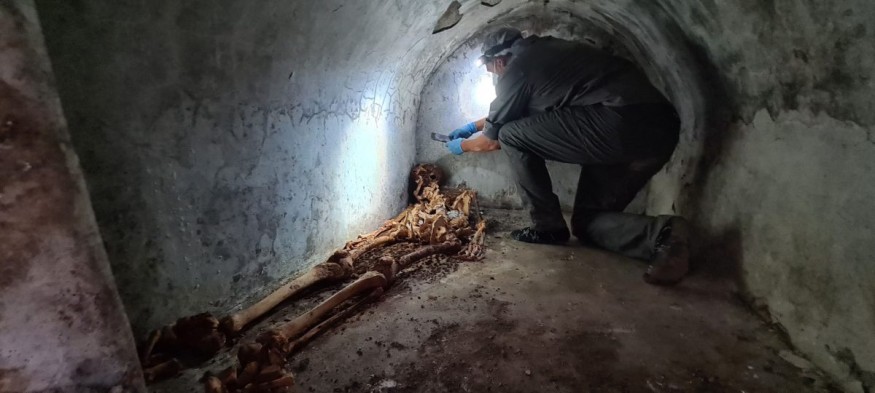Mummified remains of a previous Pompeii resident were recently unearthed on an ancient burial site of Porta Sarno. The individual was identified as Marcus Venerius Secundio through the engraved markings on the tomb.
Secundio was already running at 60 when he lost his life. According to the supporting evidence, the Pompeii citizen was also a part of the slavery system in the region but was later freed. After his release from enslavement, Secundio pursued priesthood and conducted both Latin and Greek rituals and services.
Porta Sarno Mummy: Marcus Venerius Secundio and the Cultural Diversity in Pompeii

The engravings from the Pompeii man's tomb include several clues of the first Greek culture, including rituals held in the Italian region.
Archeological Park of Pompeii director Gabriel Zuchtriegel said that the Greek cultural presentation that took place in Pompeii is a remarkable reminder that the region has a rich and diverse societal platform in ancient times.
Secundio's mummified remains are placed in an old masonry tomb at the necropolis. The tomb quarter has remnants of its original interior paintings, including a blue canvas topped with green plants. The body itself was rested in the sealed alcove, paired with a luxurious arched ceiling.
Secundio's physical features remained intact throughout the years. The cropped hair and ear of the mummy are still recognizable, and along with the well-preserved body, the tomb contains several pieces of fabric and two bottles made from glass.
These glasses are known as the unguentaria and were believed to be in the historical research community as typical grave offerings during the Hellenistic and Roman periods. Most of the excavated unguentaria contained perfumes or oils that were either a gift or medium for burial rituals.
Pompeii Necropolis in Roman Empire
The Pompeii tomb also contained additional ancient objects such as funerary urns, one of which was crafted from a blue-glass urn and was believed to be a possession of one Novia Amabilis, which translates to 'kind wife.'
Pompeii burials are traditionally performed by cremation, which baffled the archeology experts as to why Secundio was mummified. Some of the theories regarding Secundio's burial method states that it was either conducted under normal burial methods or applied due to intended decay prevention.
University of Valencia archaeology expert Llorenç Alapont said in a report by the Archeological Park of Pompeii that Secundio's mummification needs more examination to determine whether the burial method was a part of some kind of treatment or not.
The Pompeii necropolis where Secundio's remains were buried is located at the outskirts of Porta Sarno, just a few blocks away from the gate of Porta di Nola. Various notable individuals of Pompeii were buried in the same necropolis, including Marcus Obellius Firmus, a city official during the Roman empire's peak from 54 to 68 AD led by its fifth leader Nero.
Secundio's life was discovered from the inscriptions on the tomb, as well as from a secured tablet which was a product of a previous Pompeii banker named Cecilius Giocondus.
Secundio was a previous slave and worked for a temple called Venus. After his release, Daily Mail reported that Secundio joined the imperial cult and earned a priesthood title. The cult's main interest was to reminisce the works and philosophies of an older Roman emperor who was famously known as Augustus.
RELATED ARTICLE : Infinity Pool Believed as Gateway to Another Realm Unearthed, Reveals Bronze Age Religious Rituals
Check out more news and information on Archaeology in Science Times.
© 2025 ScienceTimes.com All rights reserved. Do not reproduce without permission. The window to the world of Science Times.












